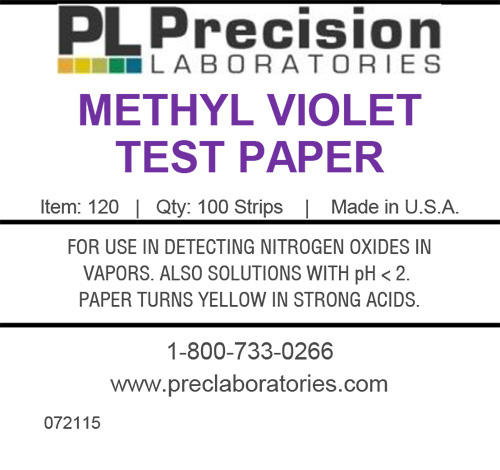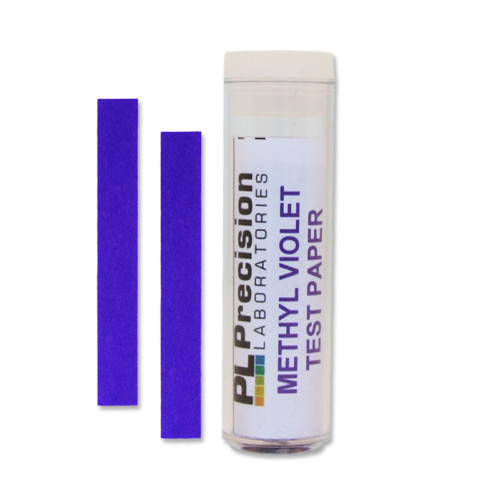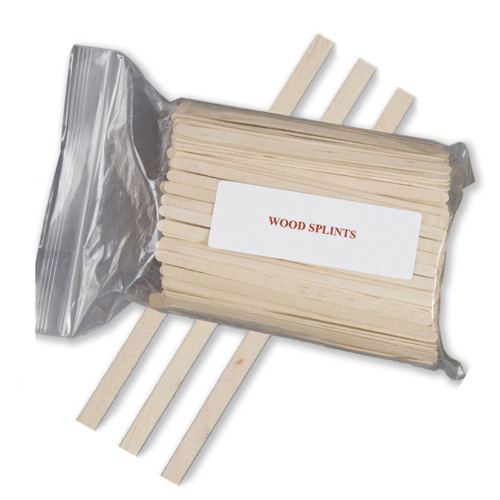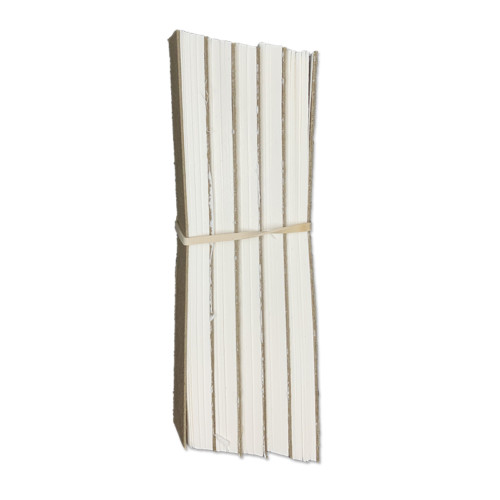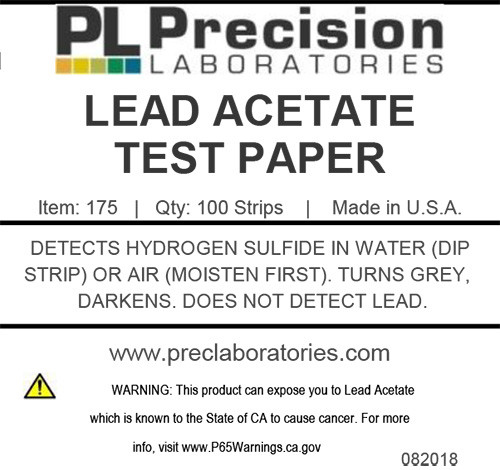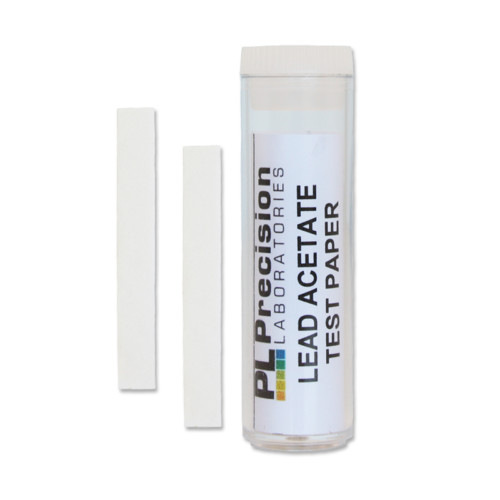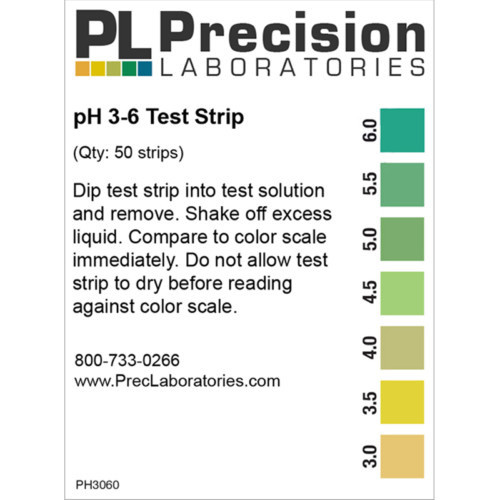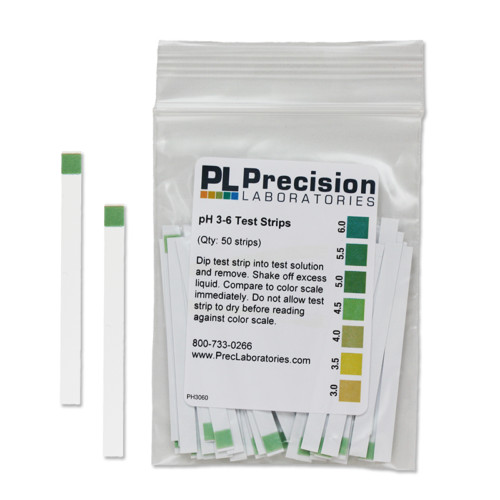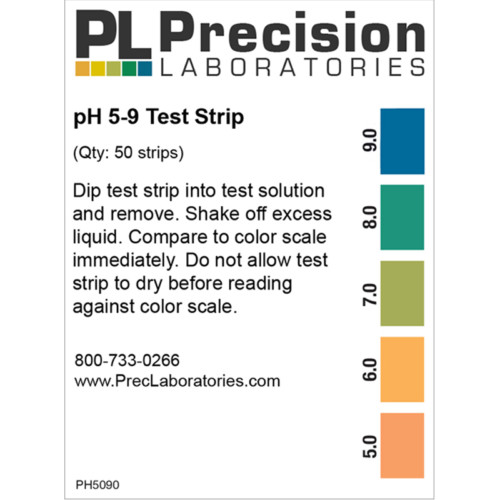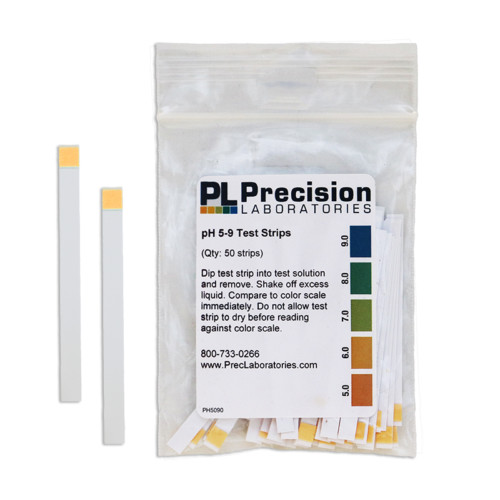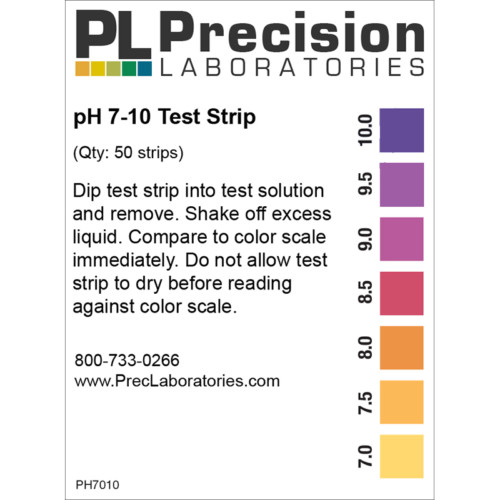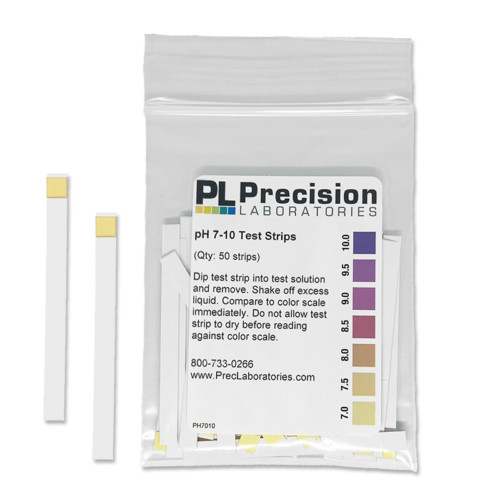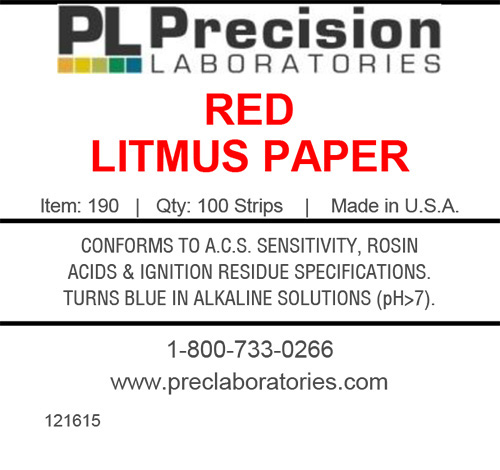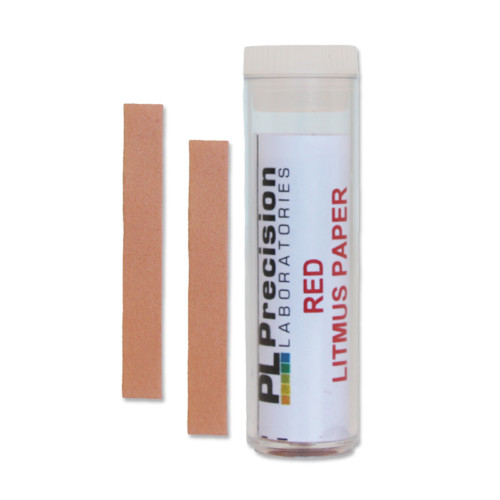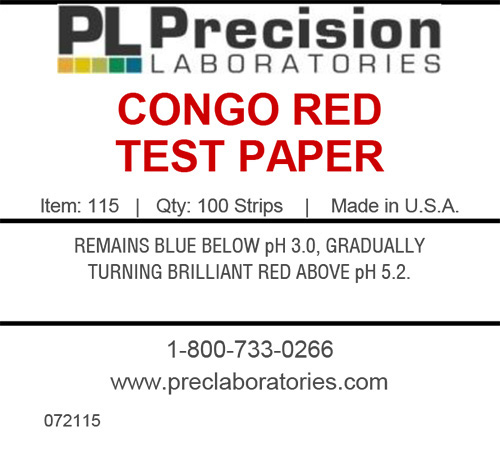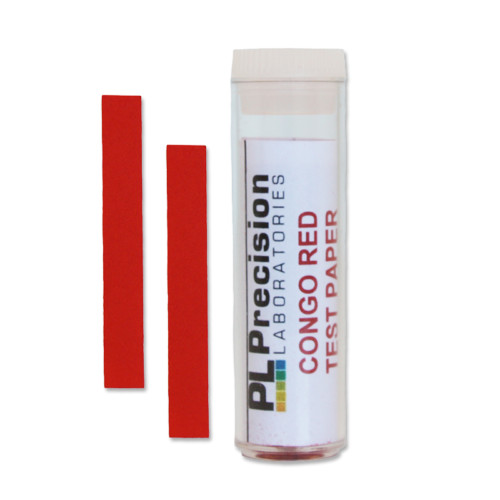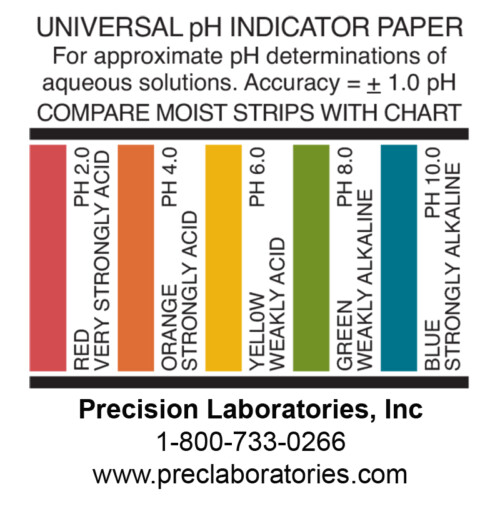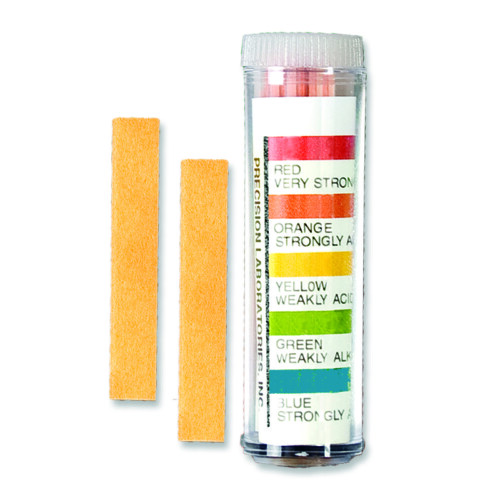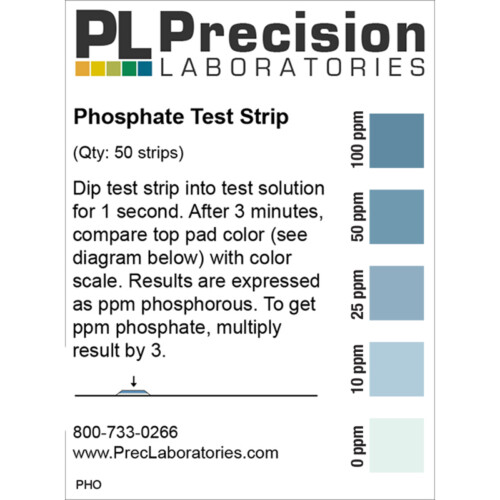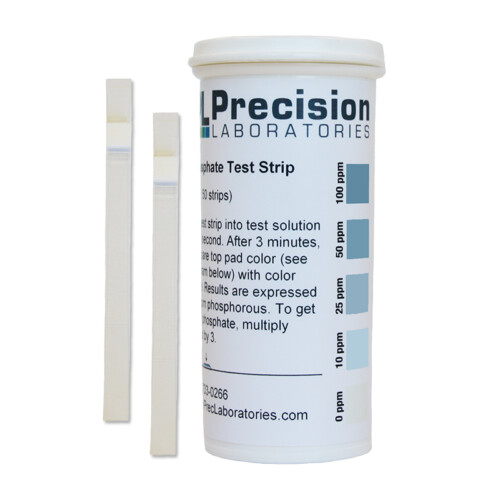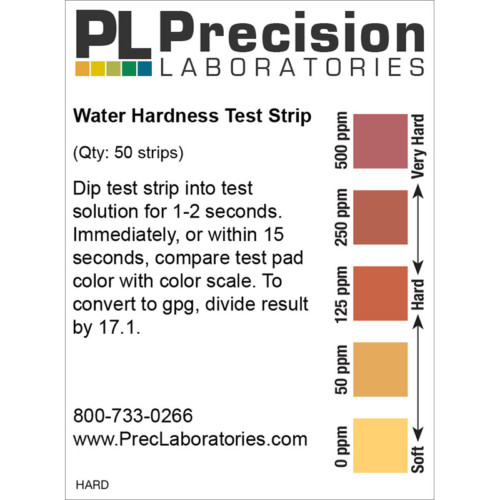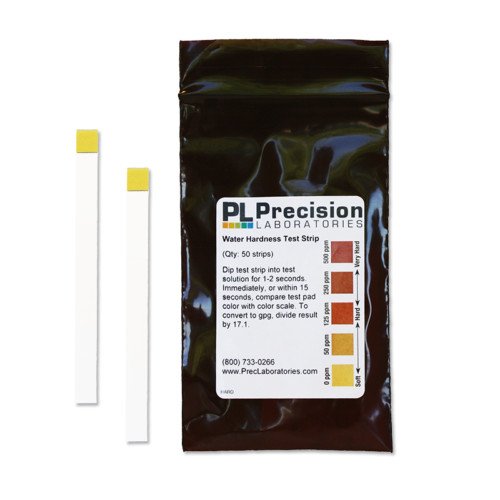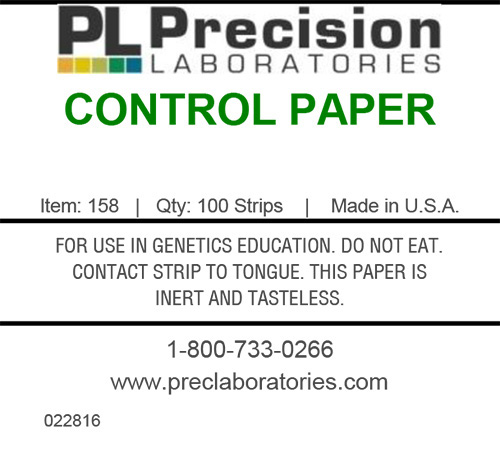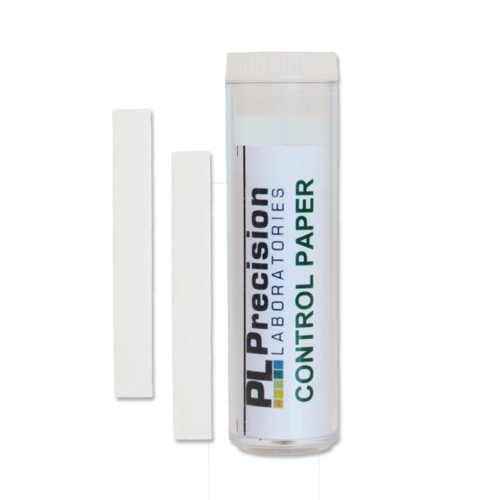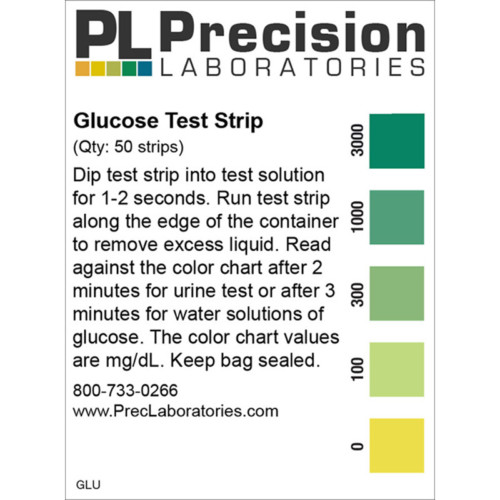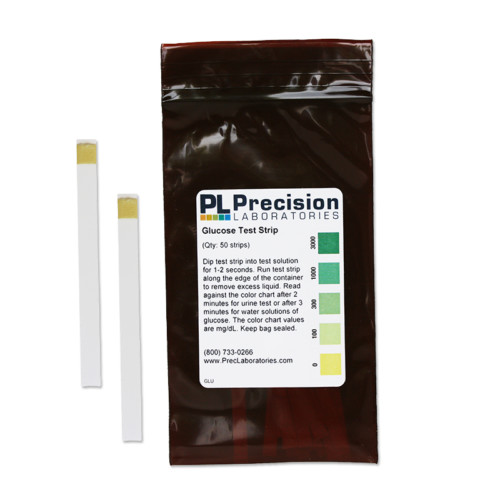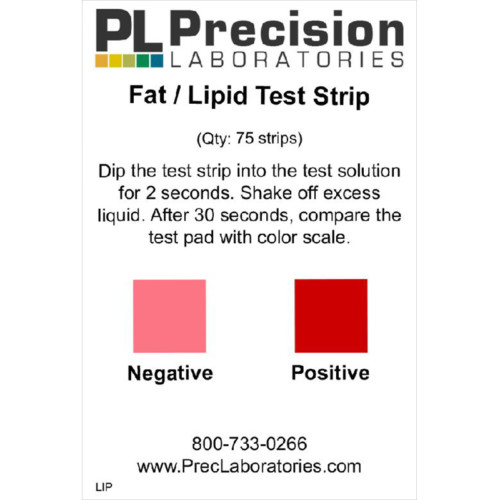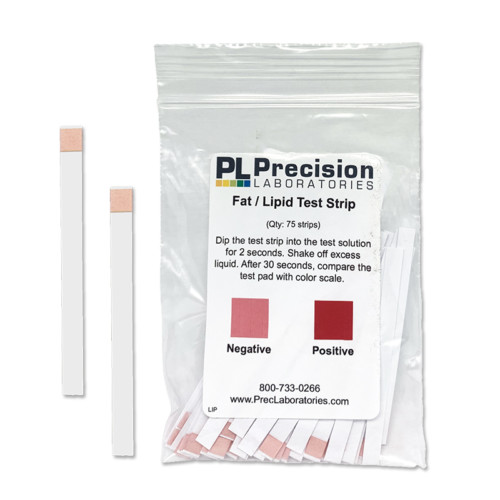-
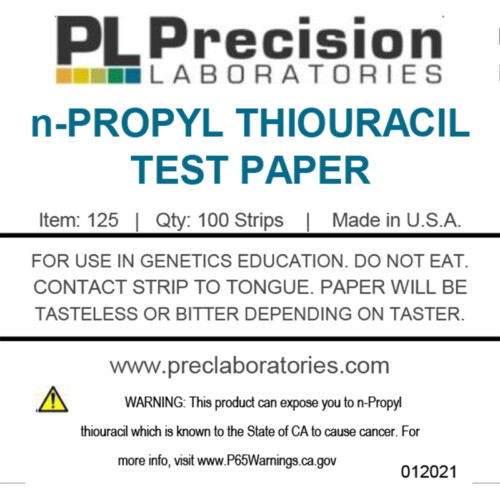
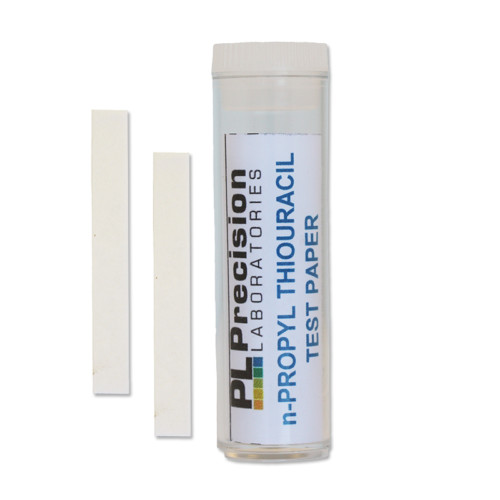 N-Propylthiouracil taste test paper (PROP) tests for the genetically controlled ability to taste this substance. PROP can taste bland, bitter or even vile depending upon how sensitive your taste buds are to this chemical. The bitter taste detected by some individuals, and its intensity, depends upon a homozygous dominant or heterozygous condition in the individuals tested. PROP is often used in taste studies aimed at identifying Super Tasters. N-Propylthiouracil test paper is perfectly safe to use. PROP is present at only 20 micrograms per strip. At this level, the compound is negligible and harmless.
N-Propylthiouracil taste test paper (PROP) tests for the genetically controlled ability to taste this substance. PROP can taste bland, bitter or even vile depending upon how sensitive your taste buds are to this chemical. The bitter taste detected by some individuals, and its intensity, depends upon a homozygous dominant or heterozygous condition in the individuals tested. PROP is often used in taste studies aimed at identifying Super Tasters. N-Propylthiouracil test paper is perfectly safe to use. PROP is present at only 20 micrograms per strip. At this level, the compound is negligible and harmless. -
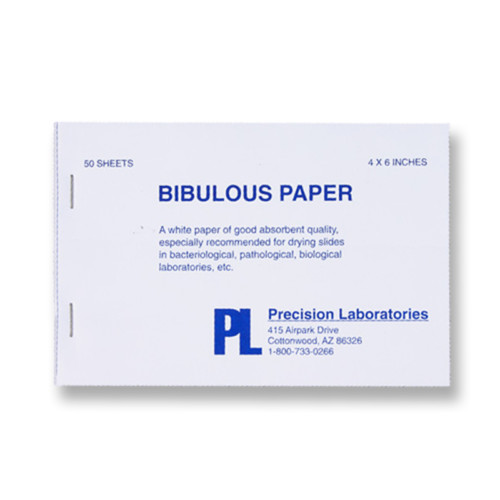
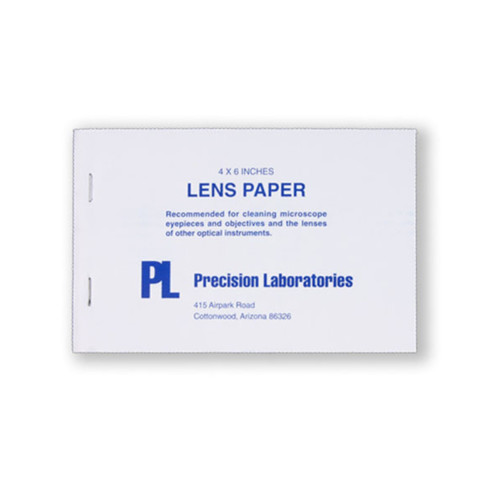 The Lens Book consists of 50 sheets of premium grade white tissue paper. The paper is suitable for general cleaning of glass and plastic lens. It is recommended for cleaning microscope eyepieces and objectives in a classroom setting. This is NOT Type 1, Class 1 grade lens paper. Bibulous Paper, or blotting paper, is used to absorb dyes. The bibulous paper is high quality, low linting, and low shedding, which is ideal for drying microscope slides.
The Lens Book consists of 50 sheets of premium grade white tissue paper. The paper is suitable for general cleaning of glass and plastic lens. It is recommended for cleaning microscope eyepieces and objectives in a classroom setting. This is NOT Type 1, Class 1 grade lens paper. Bibulous Paper, or blotting paper, is used to absorb dyes. The bibulous paper is high quality, low linting, and low shedding, which is ideal for drying microscope slides. -
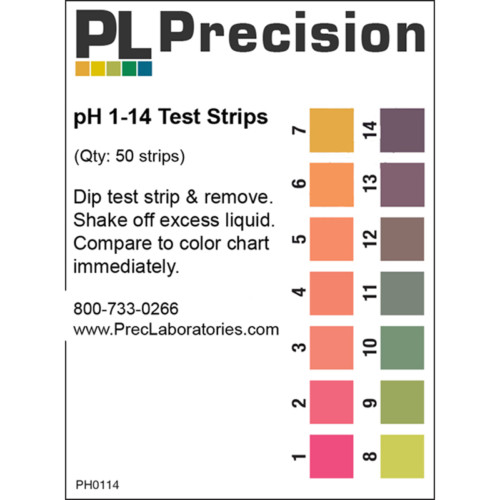
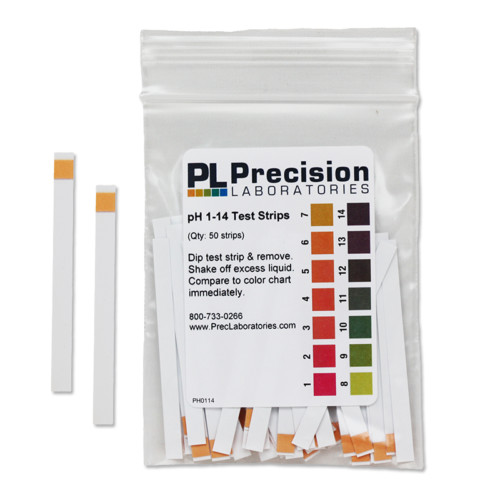 The pH 1-14 test strip (single pad) is a wide-range strip measuring in steps of 1.0 pH units, and give results in just seconds. Use the wide range pH 1-14 test strip (acid-base) when you have a diverse range of materials, and you are unsure what end of the spectrum you will land on. This strip has one pad for ease of reading and can be used in many different circumstances, including education, industry, cosmetics, water testing and more.
The pH 1-14 test strip (single pad) is a wide-range strip measuring in steps of 1.0 pH units, and give results in just seconds. Use the wide range pH 1-14 test strip (acid-base) when you have a diverse range of materials, and you are unsure what end of the spectrum you will land on. This strip has one pad for ease of reading and can be used in many different circumstances, including education, industry, cosmetics, water testing and more. -
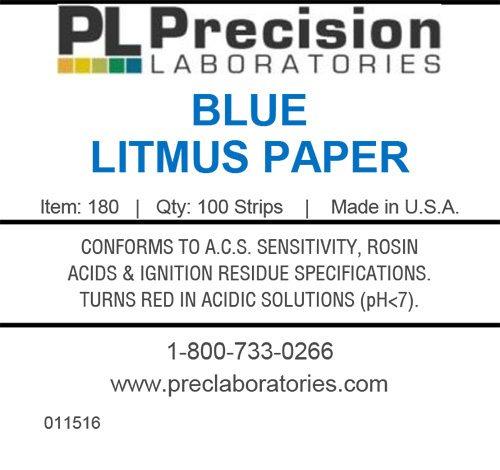
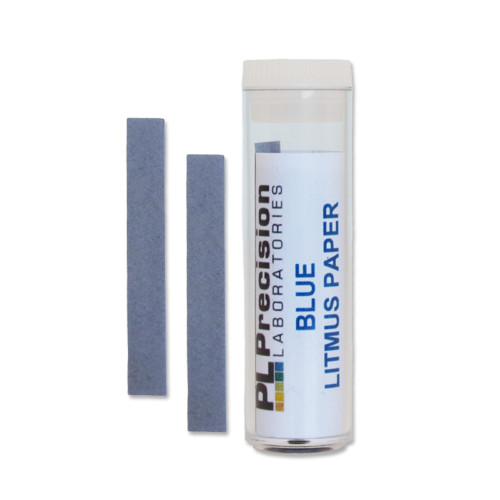 Blue Litmus test paper is a foolproof pH test to determine if something is acidic. The Blue Litmus test paper does not come with a color chart as it cannot provide you with a defined pH value. The test strip will turn red if dipped into an acidic solution (pH <7). It will remain unchanged in an alkaline solution. Although there is no color chart, the strip will turn various shades of red, getting darker the more acidic the solution. We have tested the blue litmus with multiple pH buffers. The blue paper is blue at pH 8. At pH 7, the sample is maybe just a little red. The real change to red seems to start with pH 6.5 and lower.
Blue Litmus test paper is a foolproof pH test to determine if something is acidic. The Blue Litmus test paper does not come with a color chart as it cannot provide you with a defined pH value. The test strip will turn red if dipped into an acidic solution (pH <7). It will remain unchanged in an alkaline solution. Although there is no color chart, the strip will turn various shades of red, getting darker the more acidic the solution. We have tested the blue litmus with multiple pH buffers. The blue paper is blue at pH 8. At pH 7, the sample is maybe just a little red. The real change to red seems to start with pH 6.5 and lower. -
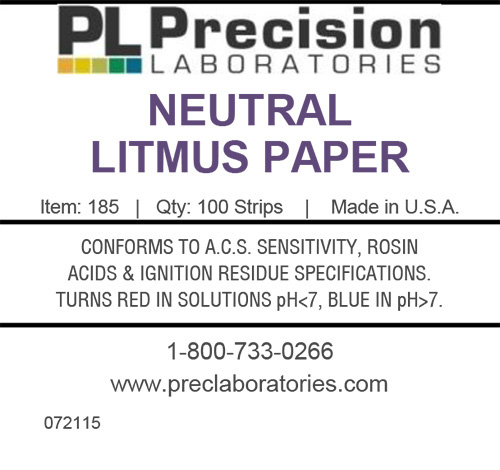
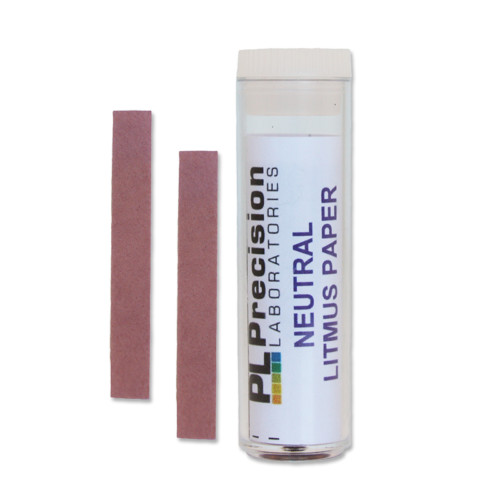 Neutral Litmus test paper tests for Neutrality of a solution, or its acidity or alkalinity. The Neutral Litmus test paper does not come with a color chart as it cannot provide you with a defined pH value. The test strip will turn red if dipped into an acidic solution (pH <7) or blue if dipped into an alkaline solution (pH >7).
Neutral Litmus test paper tests for Neutrality of a solution, or its acidity or alkalinity. The Neutral Litmus test paper does not come with a color chart as it cannot provide you with a defined pH value. The test strip will turn red if dipped into an acidic solution (pH <7) or blue if dipped into an alkaline solution (pH >7). -
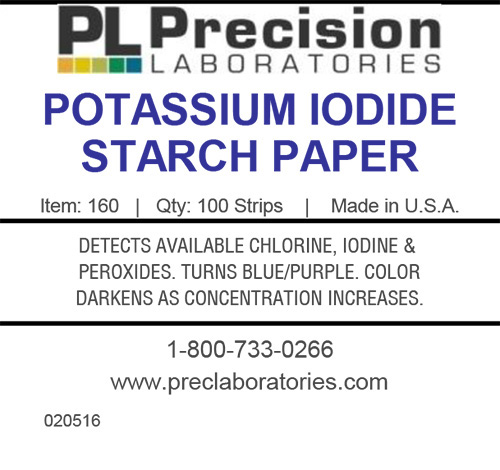
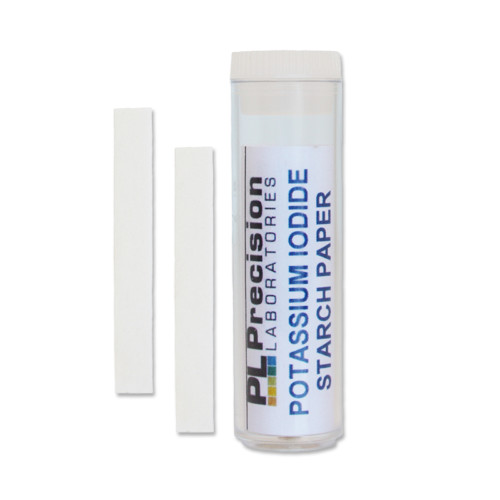 The Potassium Iodide Starch test paper detects free Iodine, Chlorine and Peroxides in solution. Lower levels react with the strip at 5 - 10 ppm. Iodine requires approximately 60 seconds to react, and initial reactions show a slight blue color, while higher concentrations turn the strip from dark blue to purple. Our Potassium Iodide Starch Paper is also available in a military grade (See Additional Information).
The Potassium Iodide Starch test paper detects free Iodine, Chlorine and Peroxides in solution. Lower levels react with the strip at 5 - 10 ppm. Iodine requires approximately 60 seconds to react, and initial reactions show a slight blue color, while higher concentrations turn the strip from dark blue to purple. Our Potassium Iodide Starch Paper is also available in a military grade (See Additional Information). -
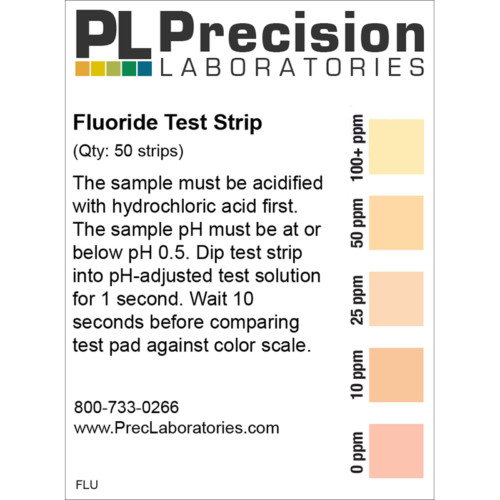
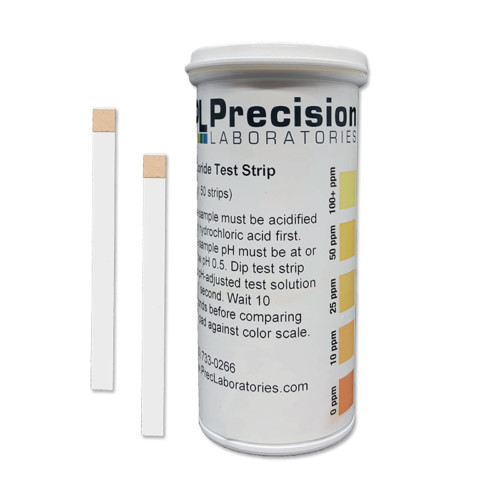 The Fluoride test strip detects Fluoride in steps of 0, 10, 25, 50, and 100ppm. This test strip is used for monitoring fluoride levels in drinking water supplied by city or townships. Too much fluoride present is harmful to humans and animals. The solution to be tested must be at a pH of 0.5 in order for this test to be accurate. This pH measure can be accomplished using concentrated Hydrochloric acid (muriatic acid) to acidify the test solution, and measured with the pH 0-1.5 test strip. Hydrochloric acid should be available at a local hardware or pool/spa store, as well as at any chemical distributors, such as Fisher Scientific or VWR. NOTE: The test strip result must be adjusted to compensate for the dilution used during the acidification process.
The Fluoride test strip detects Fluoride in steps of 0, 10, 25, 50, and 100ppm. This test strip is used for monitoring fluoride levels in drinking water supplied by city or townships. Too much fluoride present is harmful to humans and animals. The solution to be tested must be at a pH of 0.5 in order for this test to be accurate. This pH measure can be accomplished using concentrated Hydrochloric acid (muriatic acid) to acidify the test solution, and measured with the pH 0-1.5 test strip. Hydrochloric acid should be available at a local hardware or pool/spa store, as well as at any chemical distributors, such as Fisher Scientific or VWR. NOTE: The test strip result must be adjusted to compensate for the dilution used during the acidification process. -
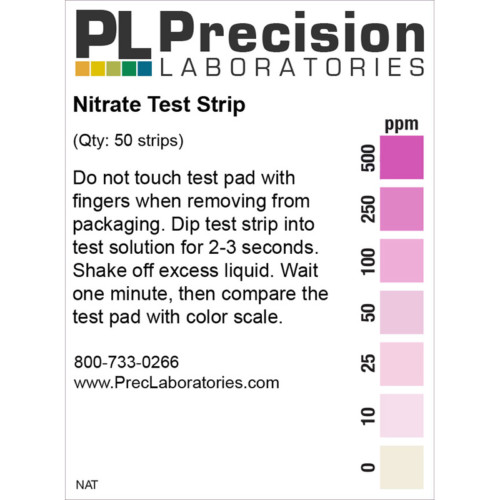
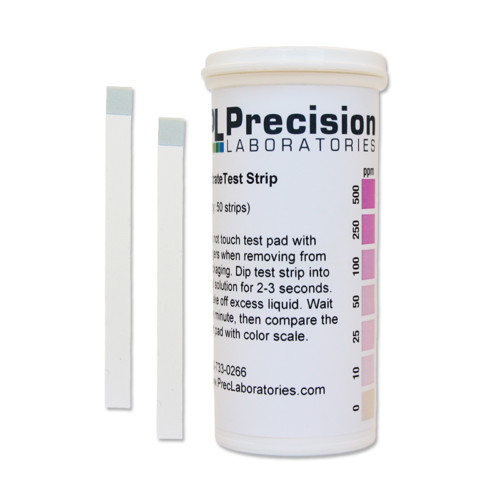 The Nitrate test strip is used to detect Nitrate in solution at 10, 25, 50, 100, 250, & 500ppm. Nitrate test strips are often used to test fertilizer run-off in agricultural areas. This strip is very sensitive to light and moisture, so be sure to keep the vial tightly sealed. For a dual Nitrate-Nitrite test, check out or combo test strip with both tests in one.
The Nitrate test strip is used to detect Nitrate in solution at 10, 25, 50, 100, 250, & 500ppm. Nitrate test strips are often used to test fertilizer run-off in agricultural areas. This strip is very sensitive to light and moisture, so be sure to keep the vial tightly sealed. For a dual Nitrate-Nitrite test, check out or combo test strip with both tests in one. -
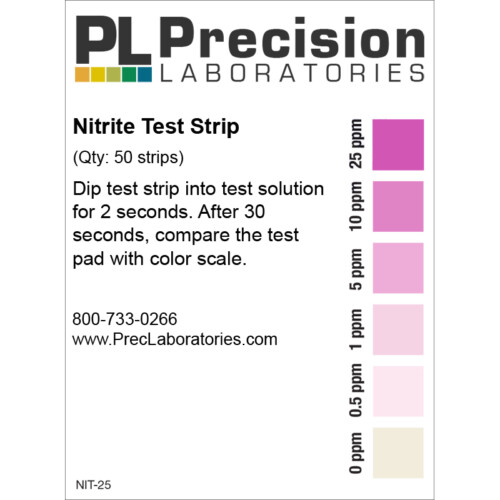
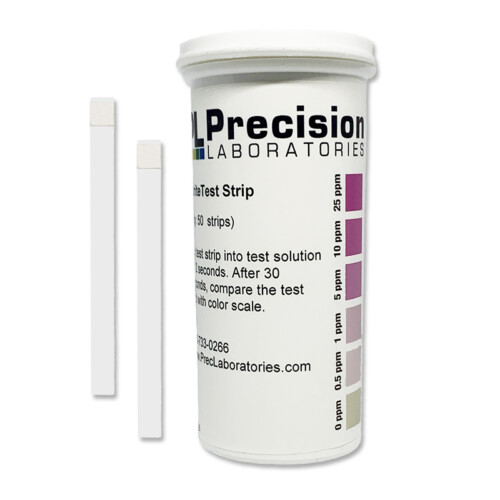 The Nitrite test strip is used to detect Nitrite in solution at increments of 1, 5, 10, & 25ppm. These strips are often used when testing for Nitrites in wine, seafood, and sandwich meats, such as ham and bologna. This strip is very sensitive to light and moisture, so be sure to keep the vial tightly sealed. For a dual Nitrate-Nitrite test, check out or combo test strip with both tests in one. The unit of measure is as nitrite, not nitrite-nitrogen.
The Nitrite test strip is used to detect Nitrite in solution at increments of 1, 5, 10, & 25ppm. These strips are often used when testing for Nitrites in wine, seafood, and sandwich meats, such as ham and bologna. This strip is very sensitive to light and moisture, so be sure to keep the vial tightly sealed. For a dual Nitrate-Nitrite test, check out or combo test strip with both tests in one. The unit of measure is as nitrite, not nitrite-nitrogen. -
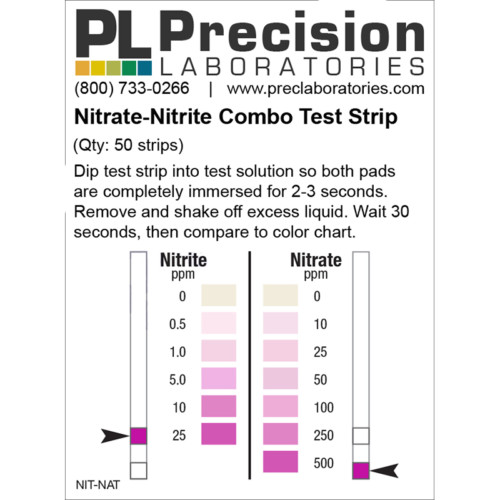
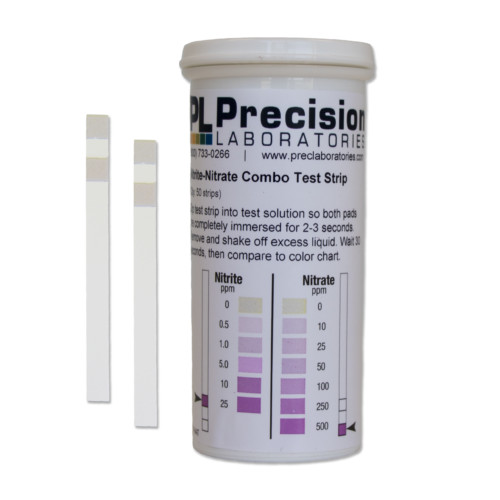 The Nitrite Nitrate test strip is used to test for Nitrites & Nitrates in solution simultaneously. The Nitrate pad detects Nitrate in solution at 10, 25, 50, 100, 250, & 500ppm. The Nitrite pad detects Nitrite in solution at 1, 5, 10, & 25ppm. The unit of measure is as nitrite, not nitrite-nitrogen. Nitrite test strips are often used when testing for Nitrites in wine, seafood, and sandwich meats, such as ham and bologna. Nitrate test strips are often used to test fertilizer run-off in agricultural areas. This strip is very sensitive to light and moisture, so be sure to keep the vial tightly sealed. We also sell the Nitrite and Nitrate test strips individually with only one test on a plastic strip.
The Nitrite Nitrate test strip is used to test for Nitrites & Nitrates in solution simultaneously. The Nitrate pad detects Nitrate in solution at 10, 25, 50, 100, 250, & 500ppm. The Nitrite pad detects Nitrite in solution at 1, 5, 10, & 25ppm. The unit of measure is as nitrite, not nitrite-nitrogen. Nitrite test strips are often used when testing for Nitrites in wine, seafood, and sandwich meats, such as ham and bologna. Nitrate test strips are often used to test fertilizer run-off in agricultural areas. This strip is very sensitive to light and moisture, so be sure to keep the vial tightly sealed. We also sell the Nitrite and Nitrate test strips individually with only one test on a plastic strip. -
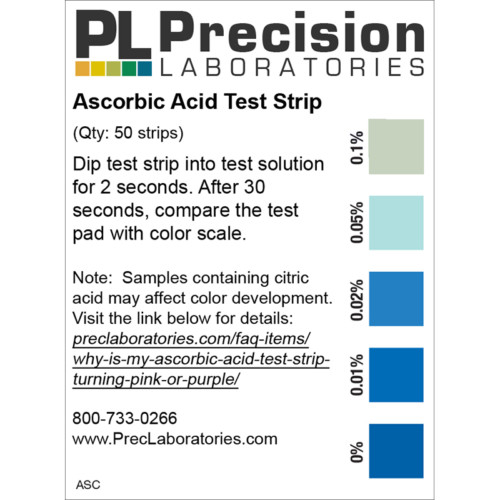
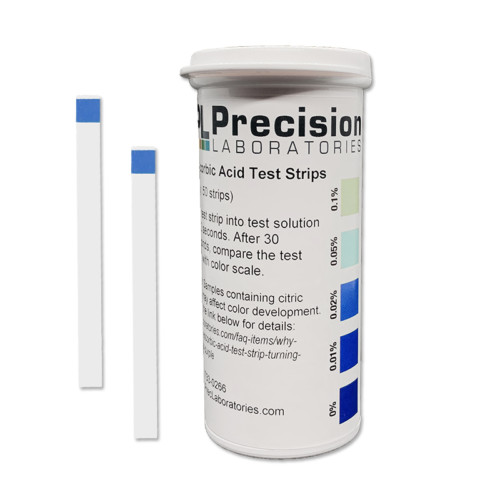 The Ascorbic Acid Test Strip is used to detect Ascorbic Acid, or Vitamin C in graduations of 0, 0.01, 0.02, 0.05, & 0.1%. The Ascorbic Acid test strip is based on discoloration of blue red-ox indicator, depending on the concentration of ascorbic acid. Red-ox indicator is also sensitive to acidic compounds, and its blue color turns to purple in the presence of acids. The Vitamin C strips are buffered to a certain extent to keep the blue color of the pad, but in the presence of strong acids, contained in some fruits or juices, the color can turn to a purple-pink instead of a blue-white. In such cases, we recommend using a special color chart (See FAQs) which shows results for Vitamin C in the presence of different concentrations of citric acid. Lemons and limes contain the highest amount of citric acid at about 5 percent. Grapefruits and oranges also have high content of citric acid at about 2.5 and 2 percent, respectively.
The Ascorbic Acid Test Strip is used to detect Ascorbic Acid, or Vitamin C in graduations of 0, 0.01, 0.02, 0.05, & 0.1%. The Ascorbic Acid test strip is based on discoloration of blue red-ox indicator, depending on the concentration of ascorbic acid. Red-ox indicator is also sensitive to acidic compounds, and its blue color turns to purple in the presence of acids. The Vitamin C strips are buffered to a certain extent to keep the blue color of the pad, but in the presence of strong acids, contained in some fruits or juices, the color can turn to a purple-pink instead of a blue-white. In such cases, we recommend using a special color chart (See FAQs) which shows results for Vitamin C in the presence of different concentrations of citric acid. Lemons and limes contain the highest amount of citric acid at about 5 percent. Grapefruits and oranges also have high content of citric acid at about 2.5 and 2 percent, respectively. -
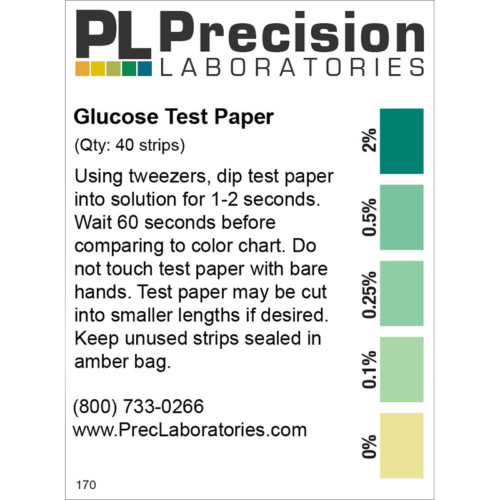
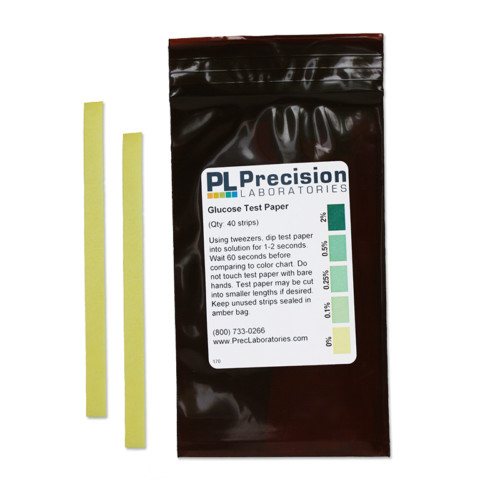 The Glucose test paper detects 0.1 - 2.0% glucose. Our Glucose Test Strips can also be used for similar purposes, however, they are plastic strips rather than paper and measure from 0-3000 mg/dL rather than percentages. The strip can be used to measure glucose levels in osmosis/diffusion experiments, urine analysis (educational only), and food science studies.
The Glucose test paper detects 0.1 - 2.0% glucose. Our Glucose Test Strips can also be used for similar purposes, however, they are plastic strips rather than paper and measure from 0-3000 mg/dL rather than percentages. The strip can be used to measure glucose levels in osmosis/diffusion experiments, urine analysis (educational only), and food science studies. -
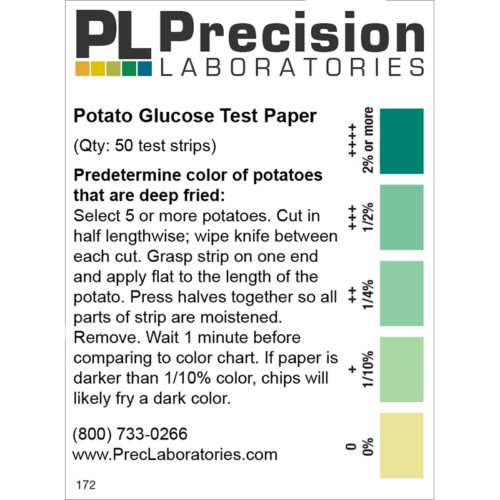
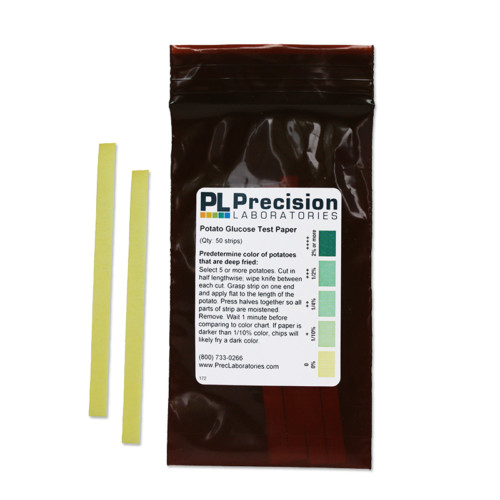 The Potato test paper is designed to detect sugar levels in potatoes. The amount of free glucose is proportional to the darkness of the potato, thus the strip can be used to determine color prior to deep frying. Potato test paper can also be used to demonstrate osmosis across a membrane, similar to the way the small intestine works, by showing that glucose, but not starch, crosses the barrier. The color chart indicates concentration levels in mg/dL but this can be converted to mmol/L by multiplying by 0.055. eg. 100mg/dL is equal to 5.5mmol/L. Potato test paper is not intended for medical diagnosis. Should you decide to test your urine and you get any positive result you should report it to your physician and test your blood sugar levels.
The Potato test paper is designed to detect sugar levels in potatoes. The amount of free glucose is proportional to the darkness of the potato, thus the strip can be used to determine color prior to deep frying. Potato test paper can also be used to demonstrate osmosis across a membrane, similar to the way the small intestine works, by showing that glucose, but not starch, crosses the barrier. The color chart indicates concentration levels in mg/dL but this can be converted to mmol/L by multiplying by 0.055. eg. 100mg/dL is equal to 5.5mmol/L. Potato test paper is not intended for medical diagnosis. Should you decide to test your urine and you get any positive result you should report it to your physician and test your blood sugar levels. -
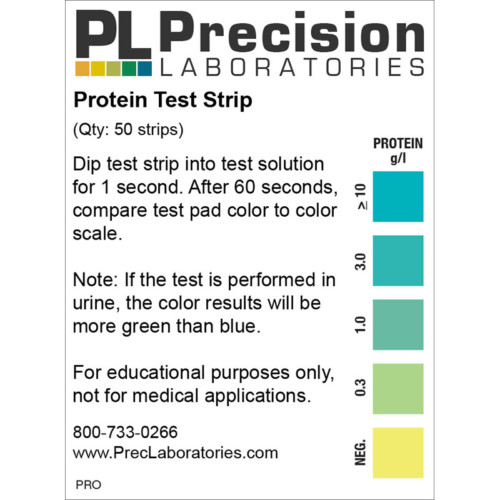
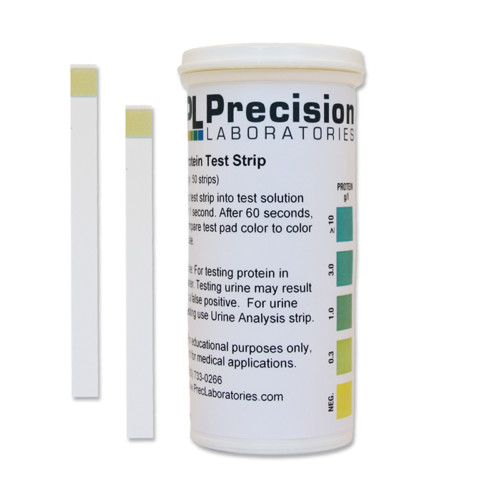 The Protein test strip detects residual Protein in water in increments of 0.3, 1.0, 3.0, 10.0 plus g/L. If used to test protein in urine, the color may be more green than blue. If testing urine samples, consider using the Urine Analysis Test Strip. The Protein test strip is based on so-called “protein error of indicators”. This phenomenon relates to the fact that certain pH indicators will change the color at a different pH value in the presence of protein then in the absence of protein. The test is more sensitive to albumin than to globulins, mucoproteins, hemoglobin and Bence-Jones protein. The Protein test strip is strictly for use in education and training students in all levels of medical and clinical-biochemical educational programs. It is not for use in the medical field.
The Protein test strip detects residual Protein in water in increments of 0.3, 1.0, 3.0, 10.0 plus g/L. If used to test protein in urine, the color may be more green than blue. If testing urine samples, consider using the Urine Analysis Test Strip. The Protein test strip is based on so-called “protein error of indicators”. This phenomenon relates to the fact that certain pH indicators will change the color at a different pH value in the presence of protein then in the absence of protein. The test is more sensitive to albumin than to globulins, mucoproteins, hemoglobin and Bence-Jones protein. The Protein test strip is strictly for use in education and training students in all levels of medical and clinical-biochemical educational programs. It is not for use in the medical field. -
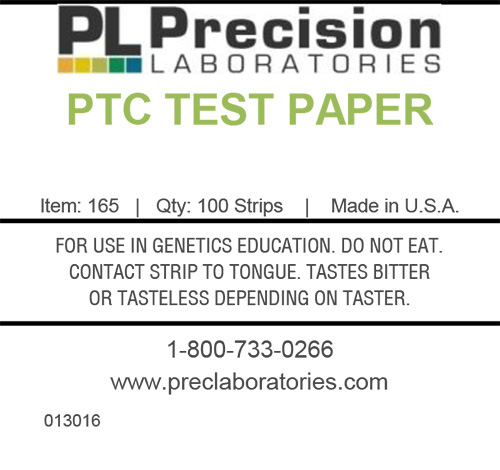
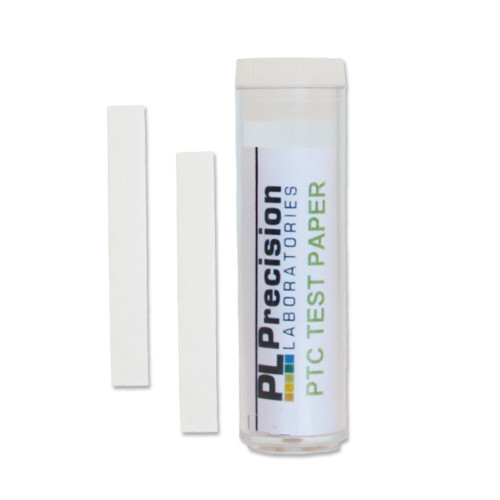 PTC (pheylthiocarbamide) taste test paper test for the genetically controlled ability to taste this substance. This will allow for the development of a Pedigree for an individual. PTC can taste bland, bitter or even vile depending upon how sensitive your taste buds are to this chemical. The bitter taste detected by some individuals, and its intensity, depends upon a homozygous dominant or heterozygous condition in the individuals tested. PTC Taste Test Paper is perfectly safe to use. Any possible toxicity of PTC would be in grams per kilogram of body weight, which is millions of times greater than anything which would be found in our taste test strips. Phenylthiocarbamide (PTC) is present at only 20 micrograms per strip. At this level, the compound is negligible and harmless.
PTC (pheylthiocarbamide) taste test paper test for the genetically controlled ability to taste this substance. This will allow for the development of a Pedigree for an individual. PTC can taste bland, bitter or even vile depending upon how sensitive your taste buds are to this chemical. The bitter taste detected by some individuals, and its intensity, depends upon a homozygous dominant or heterozygous condition in the individuals tested. PTC Taste Test Paper is perfectly safe to use. Any possible toxicity of PTC would be in grams per kilogram of body weight, which is millions of times greater than anything which would be found in our taste test strips. Phenylthiocarbamide (PTC) is present at only 20 micrograms per strip. At this level, the compound is negligible and harmless.


